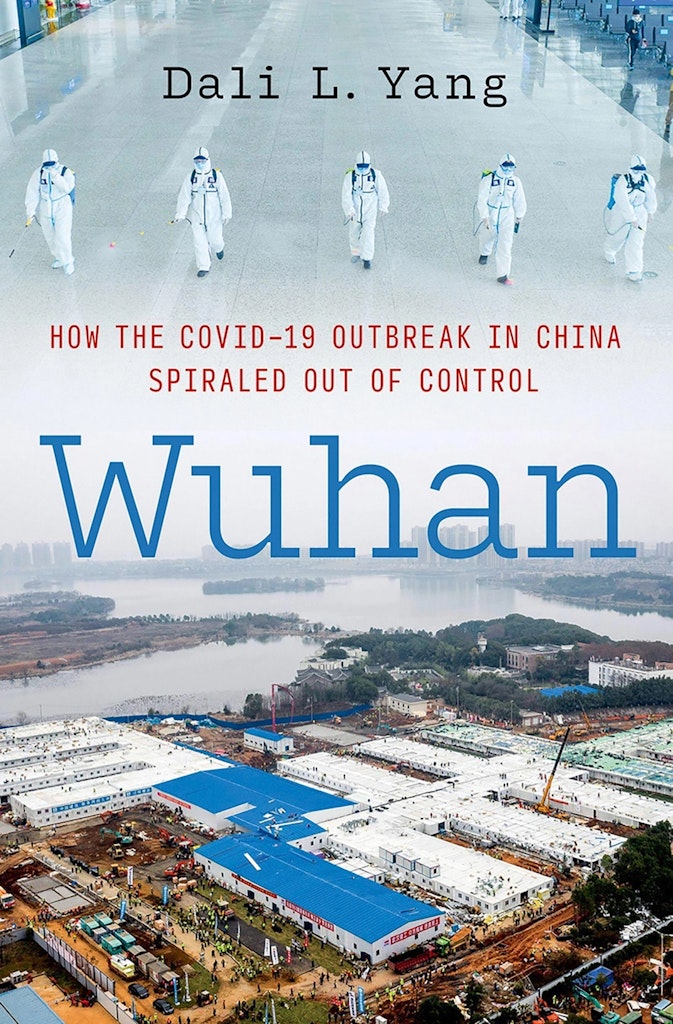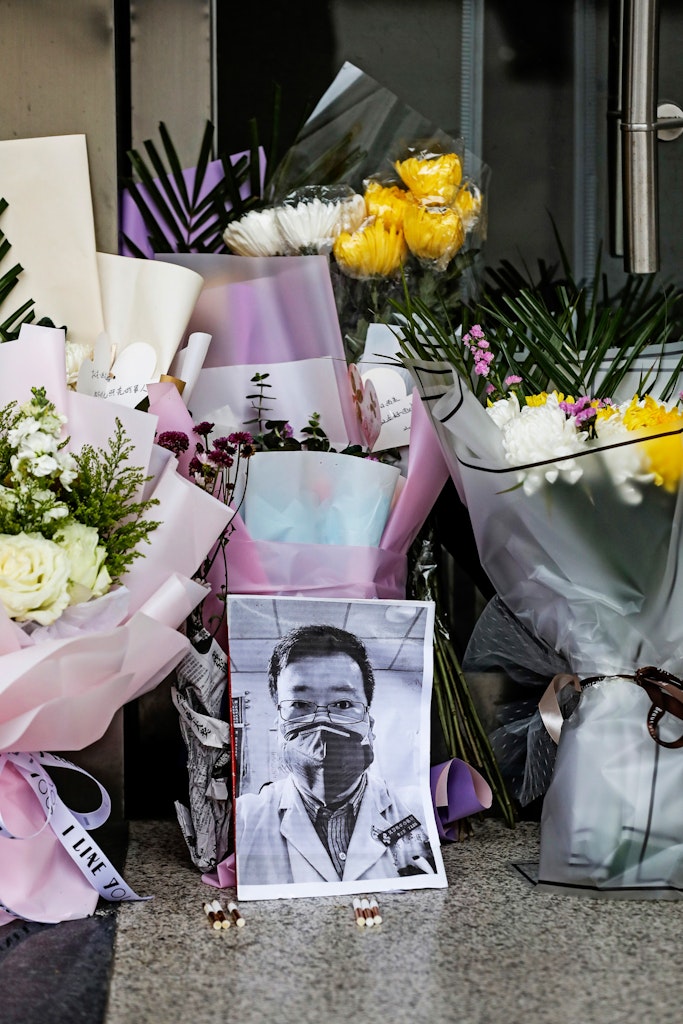How not to investigate the origins of Covid
This book on Covid’s origins is limited to criticisms deemed acceptable to Beijing
This article is taken from the March 2024 issue of The Critic. To get the full magazine why not subscribe? Right now we’re offering five issues for just £10.

At 1.30am on 31 December 2019, an eye doctor in Wuhan Central Hospital, Dr Li Wenliang, a member of the Communist Party, received a peremptory summons to attend an immediate interrogation by the Wuhan Municipal Health Commission. He was made to wait until 4am before being ushered into a room.
There he was questioned about his source for a WeChat message he had sent the previous day warning colleagues of a dangerous new infection on the loose in his hospital. He was forced to sign a humiliating confession of sharing “untruthful information”. He later died of the infection, which came to be called Covid.
The next day his source, Dr Ai Fen, head of emergency medicine at the Wuhan Central Hospital who had passed on the alarming news that an apparent outbreak of “SARS coronavirus” was happening in their hospital, was subjected to a fierce rebuke, which revealingly showed why the authorities were so keen to shut these doctors up: “You disregard the results of Wuhan’s urban construction since the [World] Military Games; you are a sinner affecting Wuhan’s stability and unity; you are the culprit undermining the City of Wuhan’s forward development.” Civic boosterism trumped public safety.
Thus began one of the most consequential mistakes in 21st-century history: the refusal of the authorities in Wuhan to admit they had an outbreak of a highly infectious virus, rather than merely an animal-caught zoonosis, and the persecution of doctors who raised the alarm. The main conclusion of Dali Yang’s intriguing book Wuhan: How the COVID-19 Outbreak in China Spiralled Out of Control is that the pandemic could probably have been prevented had the Wuhan authorities acted differently in the last days of 2019 and the first week of 2020.
This problem of “ascertainment bias” was also to fool western scientists for years
As it was, human-to-human transmission was denied for a further 18 days, medical staff were left in the dark about the risks they were running, the city’s population was exposed to infection and the chance to nip the outbreak in the bud was missed.
One person who read the WeChat messages from Ai Fen was Dr “George” Fu Gao, the head of the Chinese Center for Disease Control in Beijing. Just a few weeks before he had by chance taken part in an international exercise in New York to simulate a hypothetical outbreak of infectious coronavirus spread by pigs in Brazil. He was already on record as saying: “SARS-like viruses can appear at any time. However, I am very confident to say that ‘SARS-like events’ will not occur again, because the infectious disease surveillance network system of our country is well established, and such events will not happen again.” Ouch.

So it was with concern that Gao realised he was hearing about an outbreak of a SARS-like virus not through the surveillance network but through social media.
He raised the alarm with the health minister, who rushed a senior party official, Liang Wannian, head of the National Health Commission, to Wuhan on 31 December. There in the small hours of 1 January, citing “Xi Jinping Thought”, Liang took the decision to close down the Huanan Seafood Market, the suspected source of the outbreak, overruling the local clinicians who were already seeing patients with no connection to the market.
This led to a second huge mistake. The Wuhan Municipal Health Commission issued guidelines on how to diagnose the new disease. In addition to clinical symptoms, under the “inclusion-exclusion criteria”, a patient had to have had a link or proximity to the Huanan Seafood Market to be treated as having Covid.
As a result, cases with no link to the market were ignored. “They only transferred those [patients] with an exposure history to the Seafood Market, including those we had almost cured,” complained one doctor at the hospital designated for receiving Covid patients. “But they didn’t want any [patient] without a history of contact with [the] Seafood Market.”
After the market was closed the number of patients seemed to stabilise and fall, reassuring the authorities. But inside the hospitals of Wuhan, more and more people were presenting with symptoms and more and more doctors and nurses were falling ill, only for their cases to be deleted from the data by provincial bureaucrats in thrall to the seafood-market dogma.
This problem of “ascertainment bias” was also to fool western scientists for years as they continued to argue that because early cases were associated with, or lived near, the market, the virus must have started there. This was and is a circular argument.
Xi, poor chap, is quoted as lamenting the inadequacy of his minions
It was George Gao’s low-key announcement in May 2020 that the outbreak had probably not started in the market after all, where no infected animals had been found, that first alerted me to look further into a disturbing alternative possibility: that this might be a case of a laboratory accident.
So I assumed Professor Yang’s book, published in March 2024, would cover the question of how the virus first infected the human race, and how the regime dealt with investigating that question. I was to be disappointed. The only sentence in the entire book that deals with this matter reads as follows:
Subsequently, the question of how the novel coronavirus SARS-CoV-2 arrived at the Huanan market in Wuhan — whether it was carried by one or more animals as an intermediate host or by a human who might have become infected with the virus elsewhere — has become one of the most hotly debated issues ever in science and public health.
Not hotly debated enough to be covered in this book, however.
This omission rang alarm bells with me. Surely the strong possibility of a laboratory accident — recognised by the World Health Organisation and Western governments — deserves a paragraph, if not a chapter, in a book about what went wrong in Wuhan? True, Mr Yang’s main concern is with how bureaucracies function, but he attempts to locate the blame for the mistakes made in Wuhan — and the possible lab leak would be a big one of those.
A clue to the omission soon emerges. Professor Yang homes in on “fragmented authoritarianism”, a term to describe how, in highly dirigiste regimes, local functionaries act to defend their own reputations rather than do the right thing. This, he seems to imply, mostly excuses Xi Jinping from criticism.
The Chinese president is praised for his prompt and decisive leadership in the book. Xi, poor chap, is quoted as lamenting the inadequacy of his minions: “I write my instructions to guard the last line of defense; if I don’t give instructions, will [these officials] not do any work at all?!”
I suddenly saw the robust criticism of provincial officials in this book in a different light. Superficially, it is indeed robust:
In short, an open and transparent environment, as seen in Hong Kong and Taiwan, two societies that also had strong memories of SARS, could have mitigated, or corrected most missteps and deficiencies in outbreak response by avoiding information-related crackdowns, encouraging information-sharing and the consideration of alternatives in decision-making, trusting the public with information, and enhancing strategic leadership in such situations.
But the author, Dali Yang, is a professor at the University of Chicago and between 2010 and 2016, was the founding faculty director of the University of Chicago Center in Beijing. He is also a member of the National Committee on US-China Relations, and a member of the China committee of the Chicago Sister Cities International program. His ready access to Chinese sources must require at the very least some caution about saying things that go against Xi Jinping Thought. Hence, perhaps, the decision not even to discuss a laboratory leak, the ultimate no-no in Beijing.
And hence the focus on blaming the local government, local health commission, and local CDC, but not the equally huge mistakes made by the central government. As “fragmented authoritarianism” indicates, what people do locally in China is based on a reward system decided in Beijing. So the emphasis on political obedience and social stability at the expense of public safety is the fault of the centre, not the province. One cannot help feeling that the author of this book just happens to confine himself to criticisms that would be deemed acceptable in Beijing.
Enjoying The Critic online? It's even better in print
Try five issues of Britain’s most civilised magazine for £10
Subscribe














